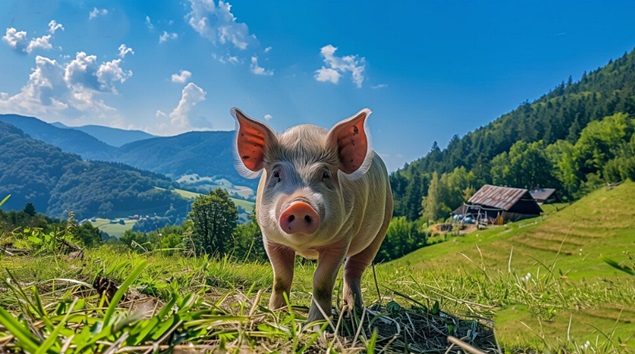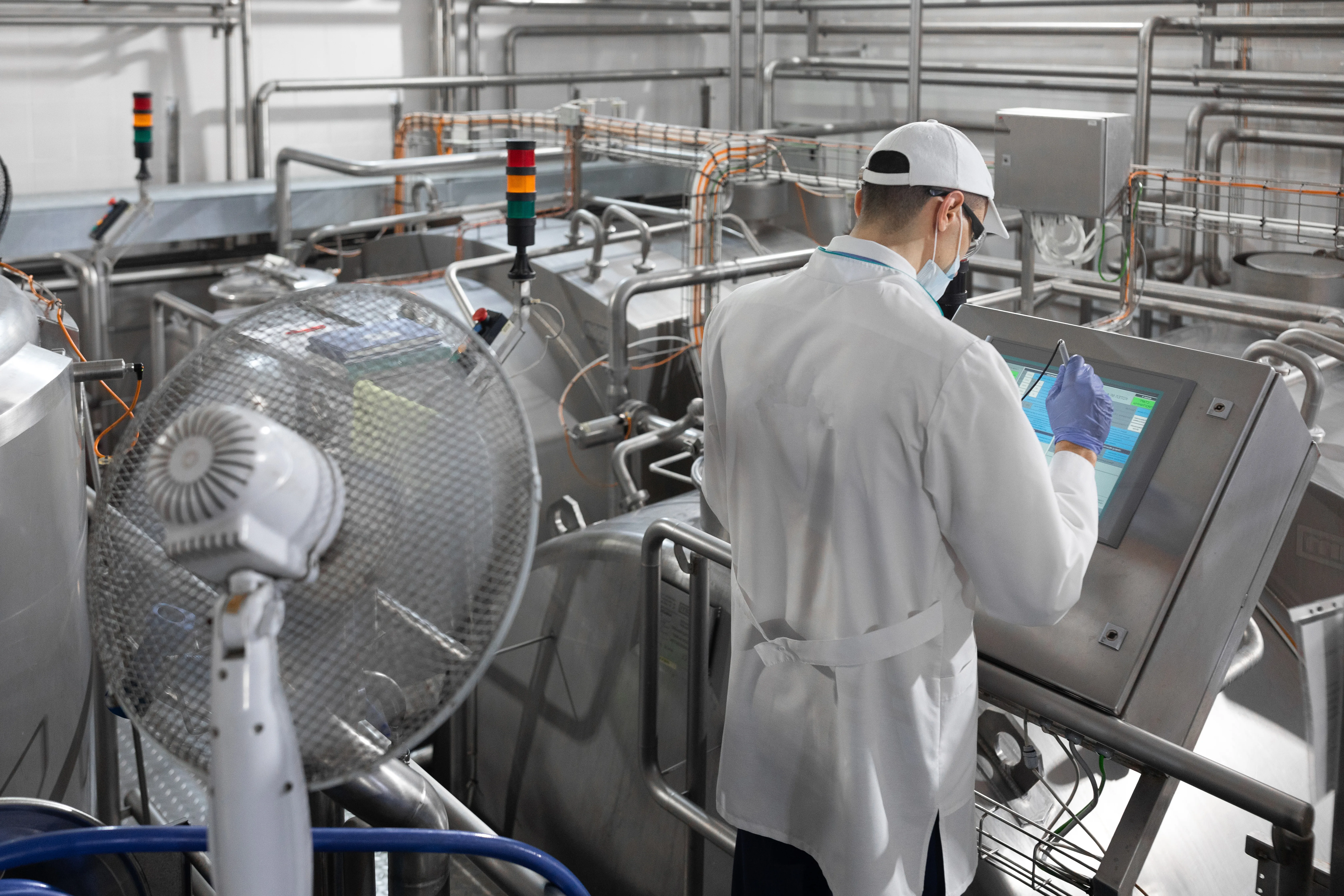
Europe’s Pig Production Sector Faces Environmental, Animal Welfare, and Market Challenges
Pig farming in Europe is currently facing a range of challenges and current issues that impact both farmers and the industry as a whole.
Key topics include environmental protection, animal welfare, health issues, and nutrition. These aspects are crucial for ensuring the sustainability and competitiveness of the European pig sector, according to an analysis by DG Agri.
Environmental Protection
The environmental impact of pig production has become a major topic of debate in Europe. Greenhouse gas emissions, waste management, and the use of natural resources are critical concerns that require careful attention.
To reduce their environmental footprint, farmers are adopting sustainable practices such as efficient manure management and emission-reducing technologies.
European policies also support a shift toward more environmentally friendly farming practices, encouraging the use of renewable energy sources and innovative technologies.
According to a report by the European Parliament, the pig sector must comply with a significant number of EU legislative acts covering environmental protection, food safety, public health, and animal welfare—each presenting distinct challenges.
Animal Welfare
Animal welfare standards have evolved significantly in recent years, influencing pig farming practices. European consumers have shown growing concern over how animals are treated, prompting the industry to adopt measures to improve pigs' living conditions.
These measures include providing adequate space, environmental enrichment, and minimizing painful procedures. However, challenges remain in ensuring compliance with regulations and changing traditional practices. A European Parliament report highlights ongoing non-compliance with EU regulations on pig welfare and the continued use of harmful routine practices.
Health Challenges
Animal diseases remain a constant threat to pig production. African swine fever (ASF) has had a devastating impact in several European countries, resulting in the culling of thousands of pigs and significant economic losses.
For instance, a recent ASF outbreak in northern Italy severely affected the country’s pig industry, leading to the culling of nearly 120,000 pigs and export bans from countries such as China and Mexico.
Strict biosecurity measures, continuous monitoring, and vaccination programs are essential in combating such threats. International cooperation and information sharing also play a critical role in the prevention and control of transboundary diseases.
Nutrition and Innovation in Feeding
Pig nutrition is an evolving field, with a growing focus on feed efficiency and the use of sustainable resources. Recent research is aimed at identifying alternative feed ingredients, reducing dependence on imported proteins, and improving digestibility.
There is also increasing interest in the use of natural additives to support gut health and enhance animal performance. Innovations in feed technology are contributing to cost optimization and a reduced environmental impact.
Market and Trade
The European pork market is experiencing fluctuations driven by consumer demand, trade policies, and the global economic climate. In 2022, EU pork production reached 23 million tonnes, accounting for 21% of global output.
However, low prices and international competition pose major challenges for European producers. Additionally, disease outbreaks such as foot-and-mouth disease can lead to export bans and economic losses. For example, a recent outbreak in Germany resulted in import bans from the United Kingdom, South Korea, and Mexico.
To maintain competitiveness, the industry must adapt to market requirements and invest in sustainable and innovative practices.
Regulations and Policies
EU policies play a crucial role in shaping the pig farming sector. Regulations on environmental protection, animal welfare, and food safety impose high standards on producers. A European Parliament report underlines the extensive legislative framework that governs the pig sector, covering a wide array of issues from food safety to public health.
Outlook for the EU and Romania
Forecasts for pork production in the European Union suggest a slight decline in the coming years. Estimates indicate a 0.5% decrease in 2024 and a 0.2% decrease in 2025. This trend is largely influenced by the spread of ASF, which remains a serious threat to the sector.
Pork consumption per capita is expected to stabilize at 30.9 kg in 2025. However, high pork prices could hinder exports and affect the competitiveness of European producers on the global market.
In Romania, the pig farming sector faces major challenges, including ASF outbreaks that have led to mass cullings and significant financial losses. To support pig and poultry farmers, the Ministry of Agriculture has proposed a state aid package worth €56 million to compensate losses and support activities in these sectors.
The Ministry of Agriculture and Rural Development (MADR) has launched a program to repopulate pig farms affected by ASF, which is essential for revitalizing the sector in Romania. The program’s success depends on strict biosecurity protocols and adherence to guidelines set by veterinary authorities.
Global Demand and the Future
Globally, food demand is expected to increase by 70% by 2050 due to population growth and changing consumption habits. This trend may impact pork production, requiring producers to adapt their strategies to meet rising demand.
In conclusion, while projections show a slight decline in EU pork production through 2025, the sector faces ongoing challenges related to animal health, market pricing, and global demand. Support measures and adaptation to new market conditions will be key to maintaining the sustainability and competitiveness of pig farming in Europe.
Biosecurity and Repopulation Measures for Romanian Farms
According to the Operational Manual for ASF Outbreak Intervention, farm repopulation must occur only after:
- Complete elimination of the virus from the premises;
- Negative serological tests performed 60 days after repopulation.
These measures are critical for preventing the re-emergence of ASF in repopulated farms.
Implementation Challenges
However, the program faces several major challenges:
- Virus persistence: ASF virus can survive in various environments, including feces and processed meat, making complete eradication difficult;
- Spread through wild fauna: Wild boars are a major source of infection, and controlling their population is a complex task.
Recommendations for Improved Efficiency
To enhance the program’s effectiveness, the following steps are recommended:
- Investment in biosecurity: Farmers should adopt strict biosecurity protocols to prevent virus introduction and spread;
- Interinstitutional collaboration: Strong cooperation among farmers, veterinary authorities, and hunting associations is essential for effective disease monitoring and control.
In conclusion, while MADR’s repopulation program for ASF-affected farms is well-structured, its success relies on rigorous biosecurity enforcement and effective collaboration among all stakeholders.
Pork Production and Consumption in Romania
Romania’s pig population has seen a steep decline in recent decades. At the end of 2023, the total number of pigs was 3,154,100—representing just 46.3% of the stock recorded in 2006.
Regarding the distribution of pigs across different farm types:
- In household farms: Approximately 1.25 million pigs were raised in 398,269 holdings;
- In large commercial farms: About 1.6 million pigs were raised in 361 units.
These figures show that a significant portion of Romania’s pig population is held in household farms, with commercial farms accounting for a comparable share. However, these figures reflect a specific point in time and may vary depending on factors such as ASF outbreaks, agricultural policies, and market demand.
In the first half of 2024, Romania imported over €500 million worth of pork, while exports totaled only €1.2 million. This indicates a heavy reliance on imports to meet domestic pork demand.
Regarding live pig imports, available data suggests a decrease in domestic pork production, leading to increased imports of processed pork. However, specific figures on the number of live pigs imported in 2024 are not currently available from consulted sources.





